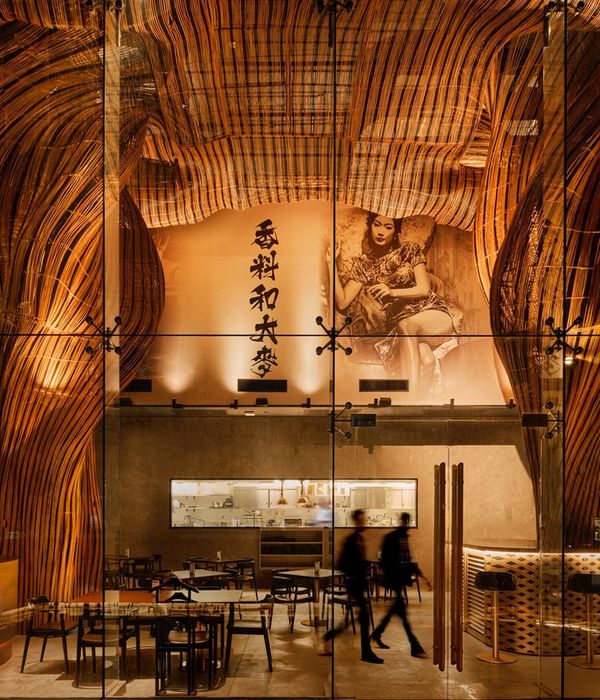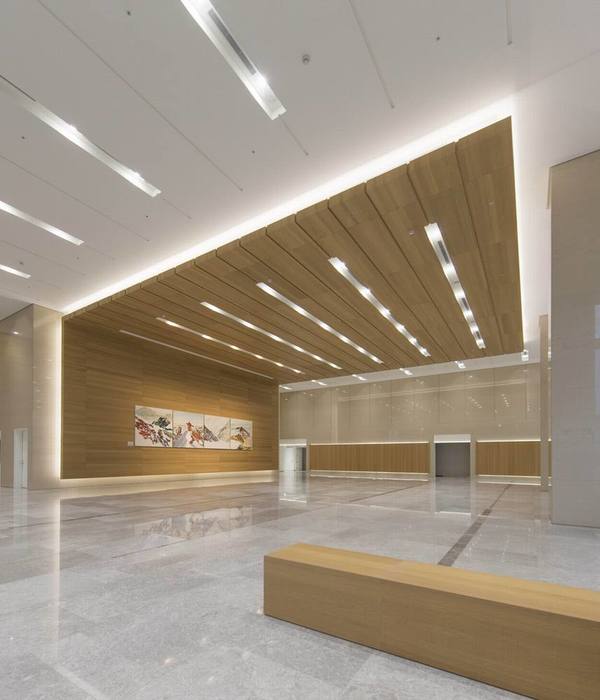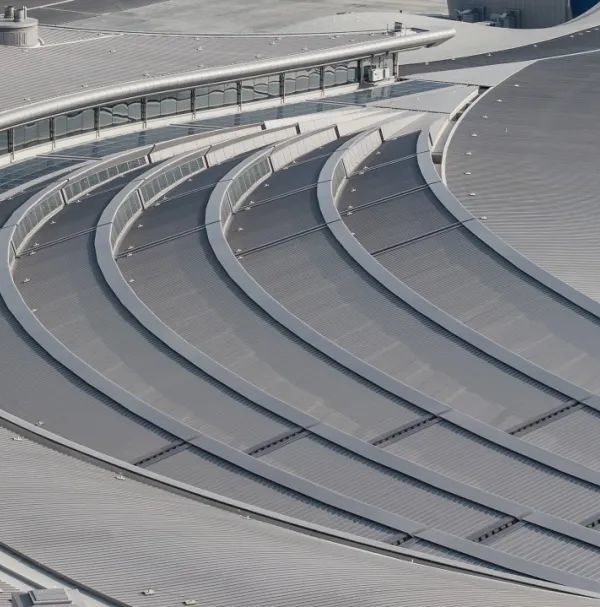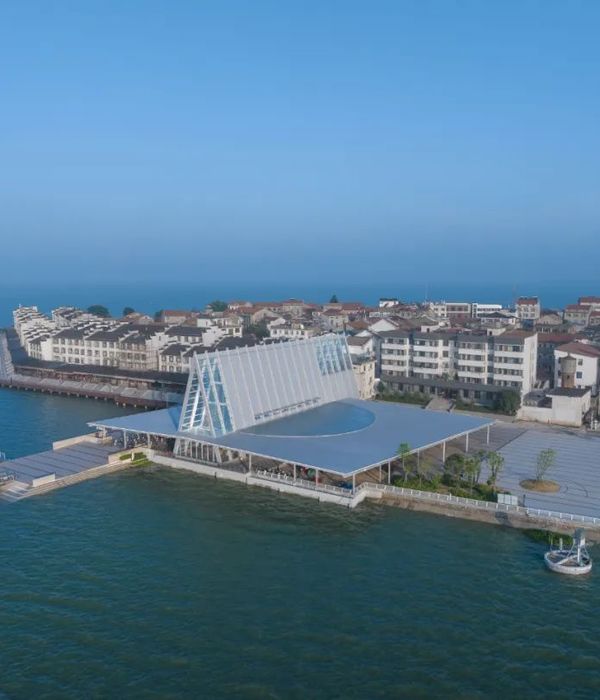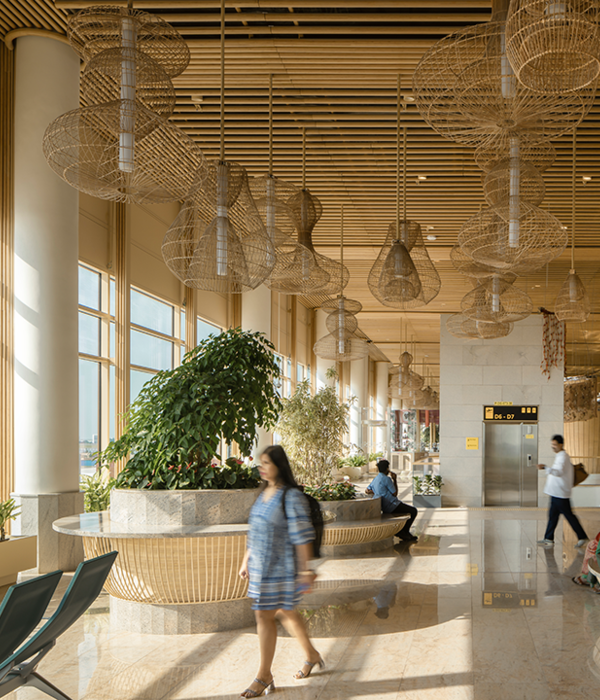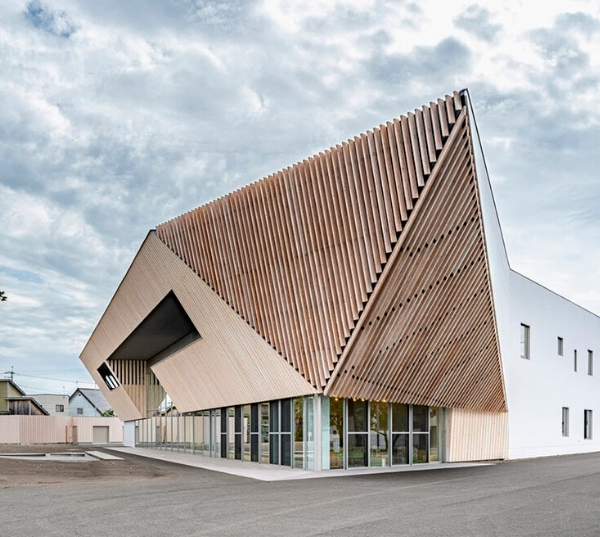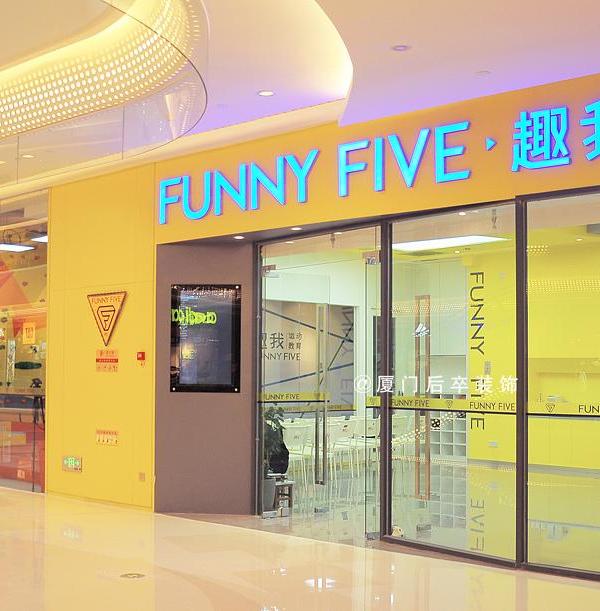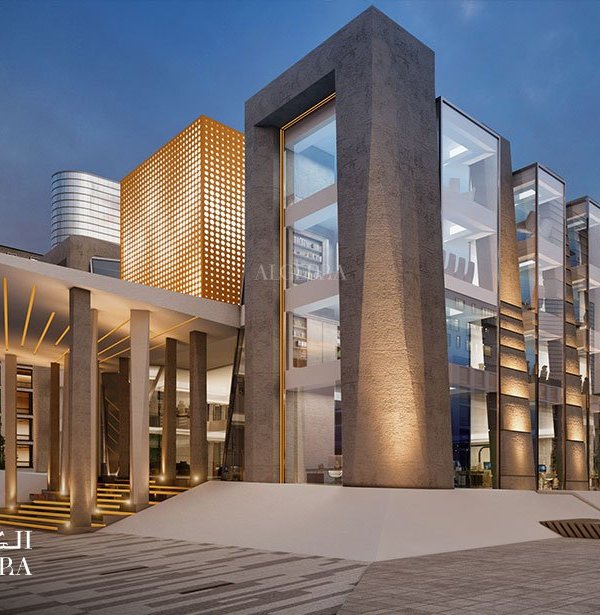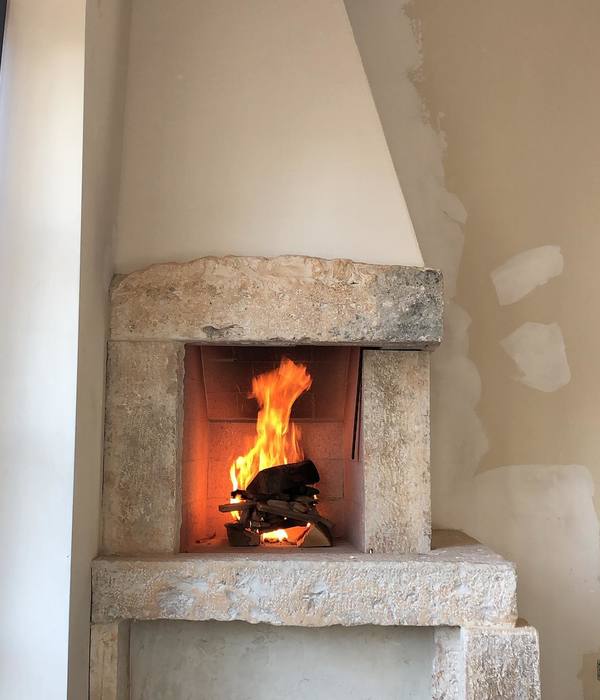莫斯科的地铁系统每年运送25亿名乘客,高峰期间的日运输量接近1000万人次,并且仍在随着不断增长的城市人口而持续扩张。在过去的20年间,莫斯科的人口数量增长了300多万(超过30%),目前已达到1250万。
新修的Bolshaya Koltsevaya地铁线(大环线)是莫斯科的第三条环城线路,将显著地增强交通网络的承载量和连接性。其中,于2018年开通的路段至今已经运输了约5800万名乘客。整条线路预计将在未来几年内建成,届时环线的长度将接近70公里。
Transporting 2.5 billion passengers each year with a peak daily usage of almost 10 million, the Moscow Metro continues to expand to serve the city’s increasing population that has grown by more than 3 million (over 30%) to 12.5 million people in the past 20 years.
The new Bolshaya Koltsevaya Line (Large Circle Line) is the city’s third orbital metro line and will significantly increase the capacity and connectivity of the network. Approximately 58 million passengers have already used its sections that opened in 2018. The entire new orbital metro line will be almost 70km in length when completed in the coming years.
▼地铁站入口,Entrance ©Zaha Hadid Architects
Klenoviy Boulevard 2号地铁站位于城市东南部Nagatinsky Zaton区的中心地带,将成为大环线和未来Biryulevskaya地铁线路之间的换乘站。其中,Biryulevskaya线还将直接连通南部的Kuryanovo区、Biryulyovo区以及市中心区域。
新车站位于Klenoviy大道与Kolomenskaya大街的交汇处,将为整个区域的居民带来极大的便利,同时还将提供通往莫斯科河畔备受欢迎的Kolomenskoye博物馆保护区及其390公顷的公园的路径。地铁站的设计提供了全面而直观的导航系统,并在照明和乘客信息系统方面实现了创新,为莫斯科著名的地铁系统定义出下一代车站的范例。
At the heart of the Nagatinsky Zaton district in the city’s southeast, Klenoviy Boulevard Station 2 will be the interchange between the orbital Bolshaya Koltsevaya Line and the future Biryulevskaya Line that will connect Kuryanovo and Biryulyovo districts to the south directly with the city centre.
Located at Klenoviy Boulevard’s intersection with Kolomenskaya Street to optimise convenience for residents throughout the district, the new station will also offer access to the popular Kolomenskoye Museum-Reserve and its 390-hectacre park on the banks of the Moscow River. Providing intuitive navigation throughout, the design incorporates new innovations in lighting and passenger information systems to define the next generation of stations on Moscow’s renowned metro system.
▼地铁站外观,Pavilion ©Zaha Hadid Architects
站台层的一系列立柱在形体上展示出一致性,而实际上每根柱子的形状都略有不同,暗示着其与站台中心的距离。这些立柱被塑造为引导乘客前进的“箭头”,与天花板和地面上的灯线相呼应,结合了寻路标识和功能性照明,同时起到提示站台边缘的作用。
A series of columns on the station’s platforms are shaped to express instances of the same form being marginally distorted as it moves through space, with each column being a slight variation in form to signify its distance from the centre of the platform. The columns are developed as ‘arrows’ that direct passengers and also integrate lines of light on the ceiling and the floors to provide way-finding, functional lighting and signify platform edges.
▼站台层,Platform Level ©Zaha Hadid Architects
灯光设计旨在丰富车站环境并为乘客提供方向引导。站台的光照条件可以进行调节,以提醒乘客列车即将到达。动态的照明系统则能够让乘客更加容易地辨识自己的方位。
The station’s lighting has been developed to enrich the environment and orientate travellers as they navigate through its spaces. Platform lighting conditions adjust to inform waiting passengers of a train’s impending arrival, while a dynamic lighting system further enhances passenger orientation throughout the station.
▼售票区域入口,Ticketing Entrance ©Zaha Hadid Architects
Klenoviy Boulevard 2号地铁站以直观的导航为特色,将凭借不断壮大的地铁网络将Nagatinsky Zaton区的居民和游客与整个莫斯科市连接起来。该车站的设计旨在让通行变得更加舒适、愉悦和安全,通过新的技术来调整内部的环境条件,为乘客带来理想的体验和清晰明了的实时网络信息。
Defined by intuitive navigation, Klenoviy Boulevard Station 2 connects residents and visitors to Nagatinsky Zaton with all of Moscow via the city’s expanding metro network. Designed to make transport comfortable, enjoyable and safe, the station integrates new technologies that adjusts interior environment conditions to enhance passengers’ experience and provide clear, real-time information of the network.
▼售票区,Ticketing area ©Zaha Hadid Architects
{{item.text_origin}}

